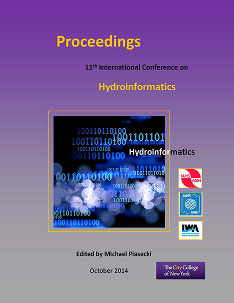Document Type
Presentation
Publication Date
8-1-2014
Abstract
This paper aims at presenting a concept for regulating water abstraction from a well field which ensures an efficient exploration of river filtrate while complying with defined minimum residence time of inflowing water. Being located on an island between a river and an attendant channel, the investigated well field consists of eight radial collector wells aligned parallel to the river flow direction. The water-level in the river is kept comparatively constant due to a downstream hydropower plant. In the channel, the water level is controlled by two weirs. Following a defined hydrograph with an amplitude of about one meter, the channel water level is on average four meters below the water level of the river. Therefore, the boundary conditions for the well field are subject to strong seasonal fluctuations. For legal reasons, water originating from the channel must remain in the underground for at least 60 days. To analyse on-site flow conditions, a three dimensional finite difference model was developed, calibrated and validated. The water balances of 23 observed steady state conditions with different abstractions from the wells and varying basic conditions were computed with the model. The computed inflow rates from the channel were analysed by comparing them with observed hydraulic heads and it was possible to show a high correlation with the ratio of certain hydraulic head gradients. A linear correlation (R² >0.9) of the quantity and the flow time of inflowing water from the channel could be formulated by analysing the modelling results. By combining these findings, it was possible to develop a criterion for restricting the abstraction from each well according to a minimum water-flow time without the requirement of a parallel operated numerical model. The underlying parameters are computed from hydraulic head values enabling automatically real time control of a non-measurable value through measurable parameters.



Comments
Session R17, Groundwater Flow Modeling I